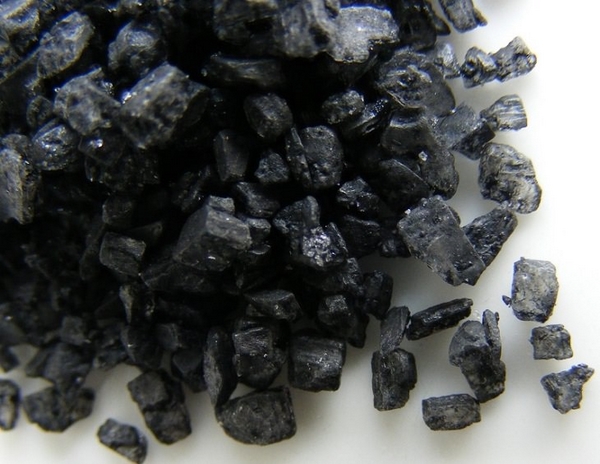Used for thousands of years as an alternative treatment for various diseases, black salt is popular not only in its place of origin, the Himalayan region, but all over the world.
What is black salt? Benefits and harms of Kala Namak

Black salt’s miraculous effects on human health play a major role in its popularity, as does its unique flavor that gives foods a unique flavor. In this article, we answer the question “What is black salt?” and provide useful information about its health benefits and potential harms.
Health from nature

What is black salt?
Black salt, also known by the names Kala Namak, kala loon, bire noon, Indian black salt, Sulemani namak, bit lobon or Himalayan black salt, is a volcanic rock salt mined in the Himalayan region. It got its name from its purple to black color. However, it is only black in its natural state. When ground, it turns pink.
There are so many different types of salt

What is Kala Namak made of?
Natural Himalayan black salt consists mainly of sodium sulfate (Na2SO4), sodium sulfide (Na2S), sodium bisulfate (NaHSO4), sodium bisulfite (NaHSO3), iron sulfide (FeS), and hydrogen sulfide (H2S), which occur naturally in the Himalayan mountains, and sodium chloride ( NaCl), potassium (K), calcium (Ca) and magnesium (Mg), as found in normal table salt.
The sulfur compounds in black salt make it special. Sulfur gives the salt a unique smell and taste, and when used in the right amount, has beneficial health effects.
What is black salt used for?
Because of the minerals that black salt contains, it is widely used in foods, cosmetics, and in alternative medicine treatments.
When ground, Kala Namak has a delicate pink color

medicine
Black salt has a significant place in Ayurveda, the well-known Indian alternative medicine system with a history of more than 2,000 years. Ayurvedic healers believe that Kala Namak salt has a variety of medicinal properties.
They use it to cure digestive disorders, eye diseases, dental problems, stress-related diseases, among others. Although there is no clinical evidence supporting many of these Ayurvedic therapies, studies have shown that black salt has some medicinal benefits. Black Himalayan Salt is rich in antioxidants and surprisingly low in sodium.
It stimulates bile production in the liver, which helps against heartburn and gas. It reduces acid, gas and bloating production, relieves reflux and increases vitamin absorption in the small intestine.
Kala Namak helps lower blood sugar levels. In small amounts, it also acts as a natural blood thinner, which helps control blood pressure.
Reap the health benefits of black salt

Since black salt contains a high proportion of sulfur compounds, you can also take advantage of the beneficial effects of sulfur by consuming black salt. Sulfur is important for skin and nail development, blood sugar regulation, bile secretion, hair growth, oxygen balance, connective tissue, brain function and the removal of toxins from the body.
Sulfur deficiency can lead to serious illnesses. The right amount of black salt can prevent sulfur deficiency.
In addition, the black salt bath is recommended for back and joint pain, as well as for skin diseases such as rheumatism, eczema, scabies and seborrheic dermatitis. Since Kala Namak also contains a large amount of potassium, it supports muscle function and relieves muscle spasms.
Support the organism in a natural way

cosmetics
Balms or soaps made with black salt have been proven to help heal oily, acne-prone and blotchy skin.
Black salt contains minerals that can improve hair growth. Kala Namak, which is included in shampoo, hair cream or hair mask, strengthens weak hair and prevents split ends. When taken with food, it significantly reduces hair loss and dandruff.
Health and beauty go hand in hand

Food
Black salt is also commonly used in cooking and is a popular ingredient in Indian, Pakistani, Bangladeshi and Nepalese cuisines. It is also very popular as an egg substitute in vegan cuisine because of its sharp and egg-like taste.
Although Himalayan black salt is low in sodium, it tastes saltier than other types of salt. Therefore, a smaller amount of black salt can be used.
The consumption of sulfur is considered healthy as long as the daily dose does not exceed 1000 milligrams. Sulfur is also used to prevent the growth of harmful bacteria in some foods. It is therefore safe to add sulphurous black salt to meals.
It is recommended not to consume more than 6 grams of Kala Namak Salt per day. People with high blood pressure should not consume more than 3.5 grams per day. 6 grams of black salt contain about 300 milligrams of sulfur.
Black salt is a well-known ingredient in Asian cuisine

Possible damage from black salt
While black salt has many benefits, it can lead to dangerous diseases if consumed in excess.
Although the sodium content of Kala Namak is low, excessive consumption of black salt can lead to potentially fatal conditions such as high blood pressure, cardiovascular disease, kidney disease, cardiac arrhythmia, headache, blurred vision, nosebleeds, dizziness, excessive sweating, nervous system suppression, epileptic seizures, strokes, stomach ulcers and inflammation.
Never exceed the recommended daily dose!

Excessive sulfur consumption can cause symptoms such as dizziness, headaches, fatigue, insomnia, distraction, stomach irritation, skin irritation, skin color changes, skin flushing, and hives.
Anaphylactic shock, which can lead to death, can also occur in people with sulfur allergies. Doctors also warn against using sulfur-containing products in combination with medications to treat acne.
Black salt offers another way to stay healthy





